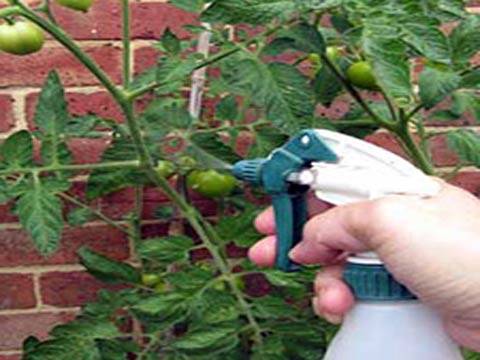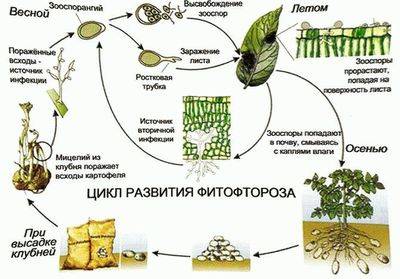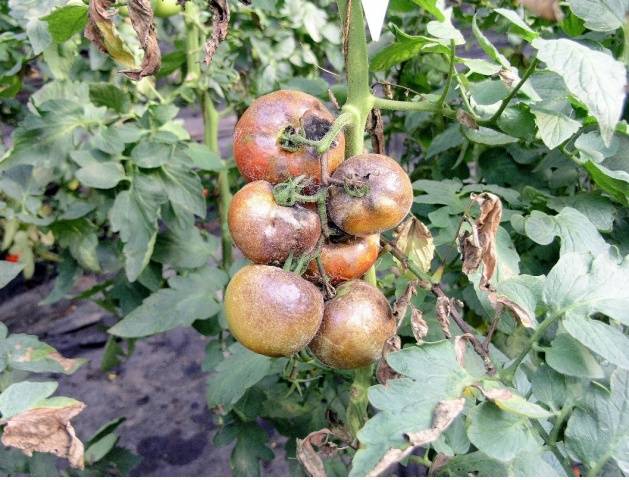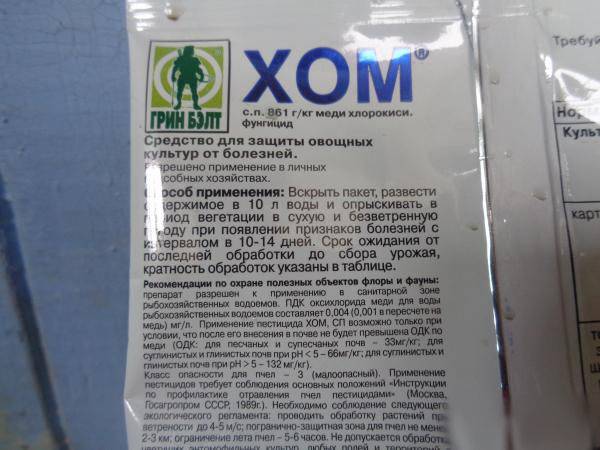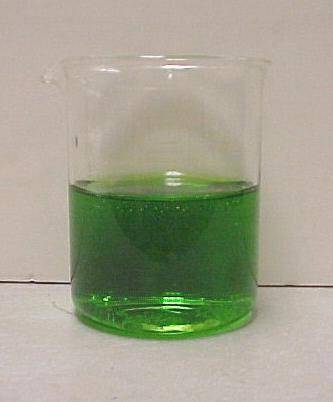Content
Modern breeders work tirelessly and create new hybrids and varieties of tomatoes every year. They, and indeed all of us, want the novelties to be tastier than the varieties that we plant. It would be good if they sang early and kept longer. But perhaps the most important thing is that they are resistant to the main diseases of tomatoes. Unfortunately, there are simply no varieties and hybrids that are resistant to them at the genetic level. If they are trying to sell you such a tomato, then the seller is simply disingenuous.
But there are varieties and hybrids of tomatoes that quite successfully resist the main scourge of nightshades - phytophthora. The gardener will only need a little help to the plant, for example, to carry out the processing of a tomato. This will significantly reduce the risk of this dangerous disease. Hom also fights against tomato alternaria.
The main signs and methods of distribution of phytophthora
Late blight or late blight is a disease of tomatoes and other crops from the nightshade family, including potatoes. Late blight is caused by pathogenic fungi. Weakened plants are usually the first to get sick. On stems and leaves appear brownish brown spots... If you look closely, you will see a delicate white fluff on the other side of the sheet. These are zoosporangia that are easily transferred from plant to plant. In a humid environment, spores of the causative agent of the disease emerge from them, which enter the plant through the stomata or germinate directly through the upper layer of tissue.
As a rule, potatoes are the first to fall ill with late blight. Fungus spores can be found on healthy-looking seed tubers and in the topsoil. From diseased potatoes, the disease spreads to tomatoes. The time from potato disease to tomato disease is only a week, maximum ten days. Spores may die in sunny weather. Wet and cold summers with sharp temperature changes and fogs contribute to the rapid spread phytophthora.
This will not only reduce the risk of disease for both crops, but will also increase the growing season of the potato, and therefore its yield. Hom-processed potatoes do not like the Colorado potato beetle.
In order to prevent phytophthora spores from infecting tomatoes, it is necessary to create a protective layer on the leaf surface of the plants, and also treat the tomatoes with such a substance that, hitting the spores of the causative agent of the disease, would destroy them. Hom meets each of these requirements.
Hom preparation and processing of tomatoes with it
Hom is a contact fungicide. What does it mean?
- Such a drug cannot cure already diseased plants, but rather reliably protects them from infection, forming a protective film on the leaves and stems. Due to the peculiarities of the action of the drug, the treatment should be of a preventive nature and begin before the onset of late blight, not only on tomatoes, but also on potatoes.
- It practically does not penetrate into tissues, concentrating on their surface.
- Copper oxychloride, which is the main active ingredient of the drug, destroys the cells of the causative agent of the disease, causing its death, but only on the surface of the plant.
- Pathogenic organisms do not get used to the action of the drug. Therefore, each treatment will be equally effective.
- Treatments can be carried out multiple times, on average from three to five times, since the drug does not accumulate in the plant.
- The duration of each treatment is from ten to fourteen days.
- The drug completely decomposes in six months into components that are not dangerous to humans.
How to apply hom
For standard treatment of plants, according to the instructions, ten liters of water are added for every forty grams of the drug. First, a concentrated solution is prepared by dissolving copper oxychloride in a small amount of water, and then the rest of the water is added. Since the processing rate of tomatoes is no more than one liter per ten square meters, such an amount will clearly be superfluous. Storage of this solution is not provided. Therefore, you need to focus on the area occupied by tomatoes, and, of course, tall varieties will require more solution consumption, since they have a large leaf mass.
Features of processing tomatoes with home
There are rules, the observance of which will help to make the treatment not only as effective as possible for plants, but also safe for humans.
- Prepare a fresh preparation every time.
- Observe the proportions during its preparation and processing norms.
- Tomatoes are processed on a clear and windless day. It is better to do this in the morning or in the late afternoon. The air temperature during processing should not exceed 30 degrees.
- When processing, pay attention to the underside of the leaves, since pathogens often settle on it.
- Be sure to wear special clothing, gloves and use a respirator. Do not smoke or eat.
- After processing, you need to change clothes, wash completely and even rinse your mouth.
- Store the drug away from food and use specially dedicated utensils for its preparation.
- Do not use iron containers and galvanized steel dishes. Copper oxychloride reacts with iron, and the composition and properties of the solution change.
- Do not allow the homa to come into contact with alkalis, they decompose it.
- Do not store the drug at temperatures above thirty or below five degrees Celsius.
- The drug has a third hazard class. It is toxic to fish and should therefore not be released into water bodies. In the first six hours after treatment, the drug is toxic to bees.
- Processing during flowering tomatoes is undesirable.
- Hom is compatible with most modern pesticides and fungicides of other classes other than those that are alkaline. It is possible to combine it with some fertilizers and immunostimulants, for example, humates and epin.
Taking into account the peculiarities of the processing of tomatoes with homom, it is better to carry them out before flowering, as well as between the flowering of the first and second flower brush. In other periods of the growing season of plants, treatments can be carried out with compositions that do not have restrictions and a waiting period, that is, the treated tomatoes can be eaten on the day of its implementation.
Phytophthora is an insidious and unpredictable disease. It is much easier to prevent it than to cure it.
